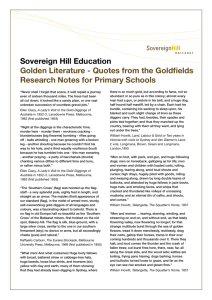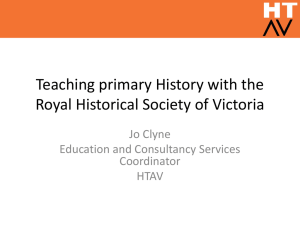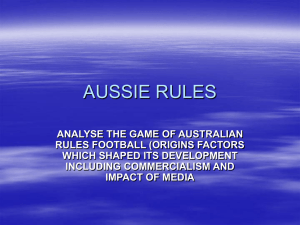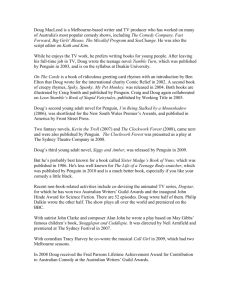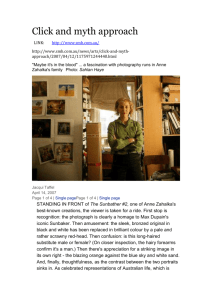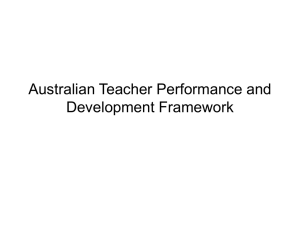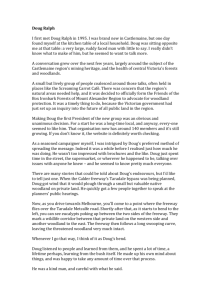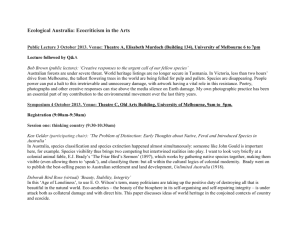click here - Geological Society of Australia
advertisement
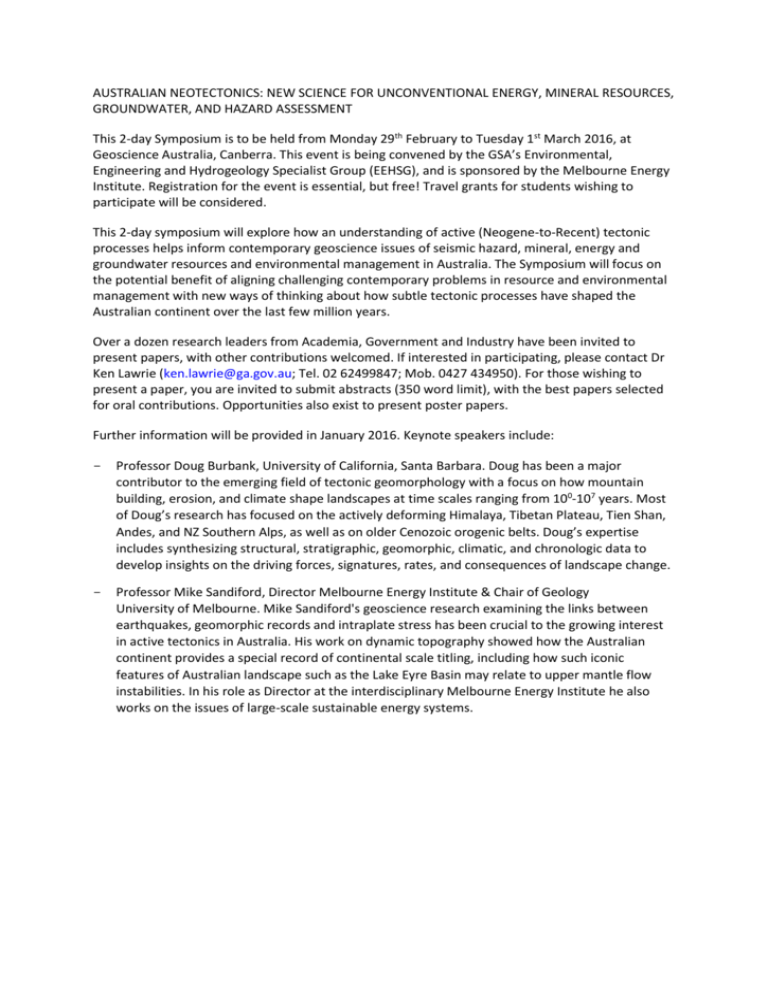
AUSTRALIAN NEOTECTONICS: NEW SCIENCE FOR UNCONVENTIONAL ENERGY, MINERAL RESOURCES, GROUNDWATER, AND HAZARD ASSESSMENT This 2-day Symposium is to be held from Monday 29th February to Tuesday 1st March 2016, at Geoscience Australia, Canberra. This event is being convened by the GSA’s Environmental, Engineering and Hydrogeology Specialist Group (EEHSG), and is sponsored by the Melbourne Energy Institute. Registration for the event is essential, but free! Travel grants for students wishing to participate will be considered. This 2-day symposium will explore how an understanding of active (Neogene-to-Recent) tectonic processes helps inform contemporary geoscience issues of seismic hazard, mineral, energy and groundwater resources and environmental management in Australia. The Symposium will focus on the potential benefit of aligning challenging contemporary problems in resource and environmental management with new ways of thinking about how subtle tectonic processes have shaped the Australian continent over the last few million years. Over a dozen research leaders from Academia, Government and Industry have been invited to present papers, with other contributions welcomed. If interested in participating, please contact Dr Ken Lawrie (ken.lawrie@ga.gov.au; Tel. 02 62499847; Mob. 0427 434950). For those wishing to present a paper, you are invited to submit abstracts (350 word limit), with the best papers selected for oral contributions. Opportunities also exist to present poster papers. Further information will be provided in January 2016. Keynote speakers include: - Professor Doug Burbank, University of California, Santa Barbara. Doug has been a major contributor to the emerging field of tectonic geomorphology with a focus on how mountain building, erosion, and climate shape landscapes at time scales ranging from 100-107 years. Most of Doug’s research has focused on the actively deforming Himalaya, Tibetan Plateau, Tien Shan, Andes, and NZ Southern Alps, as well as on older Cenozoic orogenic belts. Doug’s expertise includes synthesizing structural, stratigraphic, geomorphic, climatic, and chronologic data to develop insights on the driving forces, signatures, rates, and consequences of landscape change. - Professor Mike Sandiford, Director Melbourne Energy Institute & Chair of Geology University of Melbourne. Mike Sandiford's geoscience research examining the links between earthquakes, geomorphic records and intraplate stress has been crucial to the growing interest in active tectonics in Australia. His work on dynamic topography showed how the Australian continent provides a special record of continental scale titling, including how such iconic features of Australian landscape such as the Lake Eyre Basin may relate to upper mantle flow instabilities. In his role as Director at the interdisciplinary Melbourne Energy Institute he also works on the issues of large-scale sustainable energy systems.

